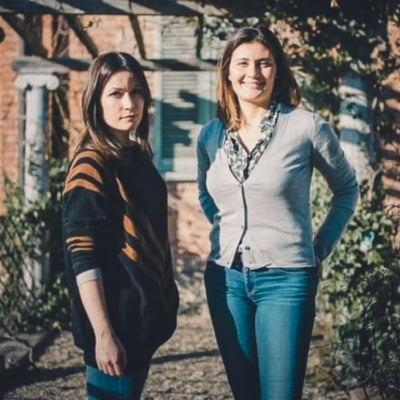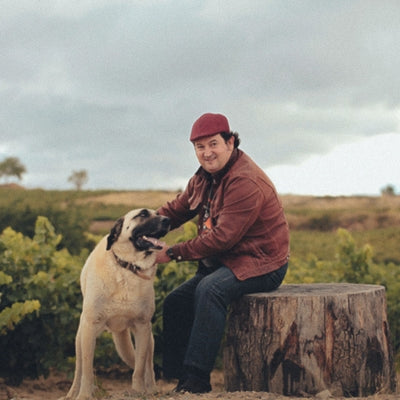
From Piedmont to Tuscany: the women shaping Gaja's future
Meet Gaia and Rosanna Gaja, the dynamic duo at the helm of the Gaja winery, a name synonymous with iconic Italian Fine Wine. As we celebrate Women's History Month, it's the perfect opportunity to shine a light on these remarkable women and the legacy they are building in Piedmont and beyond, particularly with Barbaresco.
A legacy reimagined
The Gaja family winery, nestled in the heart of Piedmont, has been at the forefront of Italian winemaking since its inception in 1859. Gaia and her sister Rosanna have taken the baton from their father, Angelo Gaja. Although he has not declared himself retired, he has entrusted his children to steer this storied estate into the future. Under their supervision, the wines Costa Russi, Sorì Tildìn, and Sorì San Lorenzo have been reclassified as Barbaresco DOP; pure expressions of Nebbiolo that reveal the true beauty of Barbaresco.
Breaking ground and glass ceilings
Gaia and Rosanna have faced the industry's challenges head-on, navigating the complex terrain of being women in a traditionally male-dominated field. Their journey is one of resilience, marked by a deep passion for winemaking and a commitment to excellence that has been instilled in them from a young age. This dedication has seen them break barriers and forge a path that honors their family's legacy while also bringing a fresh perspective to the table.
Their efforts have not only preserved the esteemed reputation of Gaja wines but have also served to inspire a new generation of women in the wine industry, including educational initiatives where they share knowledge and seek to elevate women in wine. The sisters emphasize the importance of sustainable practices, biodiversity, and a holistic approach to viticulture, showcasing the innovative spirit and respect for the land that might inspire others to follow.
A taste of terroir and tradition
Under Gaia and Rosanna's guidance, the winery continues to produce some of Italy's most revered wines, with a particular emphasis on Barbaresco. These wines, known for their complexity, elegance, and aging potential, are a testament to the sisters' dedication to quality and their ability to let the terroir speak through each bottle.
The Gaja family's commitment to excellence extends beyond just the vineyards. The sisters are also active in promoting Piedmont as a premier wine destination, contributing to the region's growing recognition on the international stage through wine tourism. Gaia has also been named Godmother of the ultra-luxury ship, Silver Moon, an honor that reflects her status within the Italian wine industry as well as her family's long-standing reputation for elegance and good taste.
A future forged by female leadership
As they look to the future, Gaia and Rosanna Gaja are not just preserving their family's winemaking tradition; they are redefining it. Their vision extends beyond the vineyard, aiming to leave a lasting impact on the wine industry and beyond. Through their leadership, Gaja remains a beacon of innovation, sustainability, and excellence in Italian winemaking.
In much the same way that Elisabetta Geppetti has paved the way for women in Maremma, Gaia and Rosanna are charting a new course for female vintners in Piedmont and beyond. Their story is one of inspiration, a reminder of the power of passion, dedication, and the strength of women's leadership in transforming traditions and setting new standards of excellence.
As we raise our glasses to the contributions of women in the wine industry this Women's History Month, let's toast to Gaia, Rosanna, and the many other women shaping the future of wine. Their legacy, like their wines, is one that will be savored and celebrated for generations to come.
How sorting works
Sorting can be done by inspecting whole bunches or single berries (after destemming). It can be carried out using specific equipment ranging from simple hand-sorting tables to more technological solutions such as shaker tables and digital optical sorting systems. The traditional way to sort fruit is done manually by operators who visually and physically inspect grapes on a moving belt or sorting table. Depending on the size of the crop and winery, the number of people involved may range from a couple to a dozen at a time.
Automated sorting machines that inspect single berries are also widely used. The basic models of sorting equipment select berries based on their physical properties such as berry size, weight, and shape. The most advanced sorting technologies today are digital optical sorting machines. This system is equipped with a computer that takes photographs of single berries, immediately ejecting, via blasts of air, any underripe, raisined, or rotten berries. The berries are selected based on parameters such as color, shape, and size that are set up by the winemaker. At Dominus, one of Napa Valley’s most prestigious estates, they are passionate advocates of rigorous sorting, which is believed fundamental in achieving the purest expression of their terroir. Here, hand-harvested grape clusters initially go through manual sorting followed by an optical sorting system that selects only the most perfect berries.
Want to read more? Take a look at some of our other blogs:
Also in News



